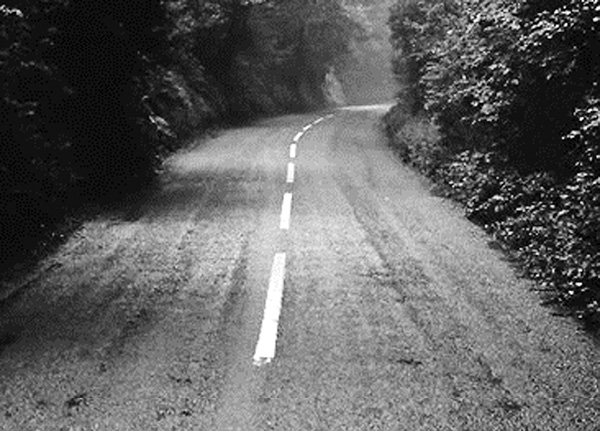
NO FOREIGN ROADS
first performed on June 21, 2014
A country road, Somerset, England
performed once in 2014
MICHAEL BRAMWELL
Cary, North Carolina
695880452M695880452i695880452c695880452h695880452a695880452e695880452l695880452B695880452r695880452m695880452w695880452e695880452l695880452l695880452469588045296958804523695880452@695880452g695880452m695880452a695880452i695880452l695880452.695880452c695880452o695880452m
NO FOREIGN ROADS
MICHAEL BRAMWELL
“One recognizes one’s course by discovering the paths that stray from it.” —Albert Camus
Whether exemplified by Paul the Apostle’s conversion on the road to Damascus or Dorothy’s experiences on her way to Oz, roads consistently function as metaphors for encounter and self-realization; dynamic chronotopes collapsing time and space of our present circumstances into the potential future of where we hope to be. “No Foreign Roads” is, among other things, a durational performance work requiring the artist to travel to a random, solitary country road in Somerset, England and over a course of seven days, hand-sift three hundred and fifty-two white traffic lines, in powdered chalk, down the center of the road for a distance of one mile.
Each line as it was drawn, was an existential meditation for me on the modes of spiritual progress, namely, self-discovery and self-making. Each mode possesses a distinctive mood as it were. Even if people happen to stray into unfamiliar territory and despite what may happen during this diversion, it is never unchangeable. Each individual possesses creative ability, as Joseph Beuys the post-war German artist liked to say, to restore the lines of continuity, and re-discover their original path. In this mode of spiritual progress human failure is seen as a condition in which the person has fallen off their “true” path in life and followed divergent roads; many of which consistently lead to death and destruction.
The second mode is more existential and emphasizes breaks and novelty and focuses less on the Plotinian theme of returning to original sources. It is what Camus is referring to in the epigraph. It is punctuated by crises of loss of the familiar and encounter with the unexpected. Artists often call this effect an accident i.e., what was intended to be in the work but never made it in, or what made it in that was never intended. In the spirituality of self-discovery, I am what I was in my origins; for the spirituality of self-making, I am what I may hope for.
This work utilizes aesthetic methodology to explore ontological issues of being in the world. It also uses text in addition to photography as a form of performance art documentation. An entire seven days of work was washed away by an afternoon thunder shower.